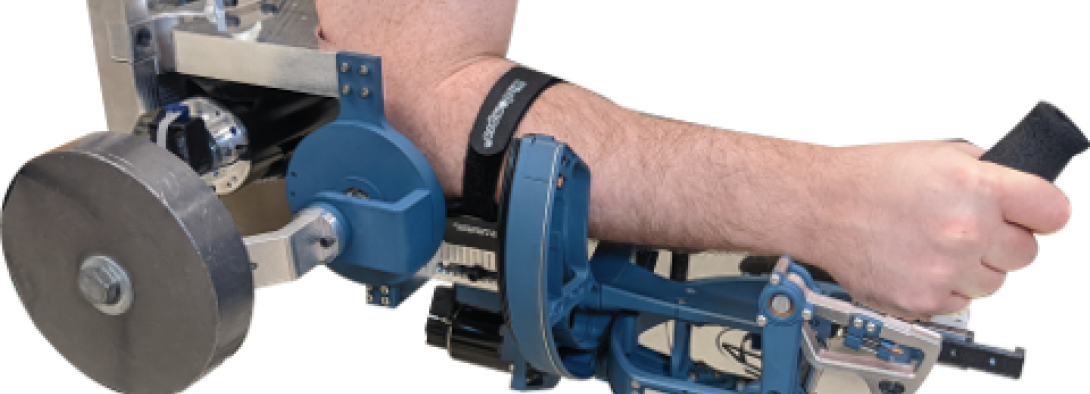291,000 people are currently living with SCI, and 60% of them have cervical level injuries leading to tetraplegia. Restoration of arm and hand function is a top priority for this population, and while some incomplete SCI patients benefit from rehab, many require assistance with activities of daily living (ADLs). Two commonly used rehabilitation/assistance techniques are rehabilitation robotics, and functional electrical stimulation (FES), but neither have proven to be effective for long-term functional assistance.
Rehabilitation robots enable precise and repeatable movements and the typical sensors make it easy to collect reliable data for clinicians and researchers. However, the power and size requirements largely limit rehabilitaiton robots to a clinical setting. FES operates by using small electrical currents to activate (usually paralyzed) muscles. Because this actually uses the person’s muscles, it provides many of the benefits of exercise, and it does not require the use of bulky and high-powered systems. However, this technique is useful mainly for gross actions, such as grasping, but struggles with making high fidelity or repeatable movements.
Our goal is to combine the two assistance techniques to create a system that can assist people with SCI in performing ADLs. This will enable us to use a low-power exoskeleton, requiring less weight and less power in combination with the already lightweight FES. Additionally, the on-board sensors from the exoskeleton will allow for closed loop feedback in refining the FES movements over time and repetitions.

